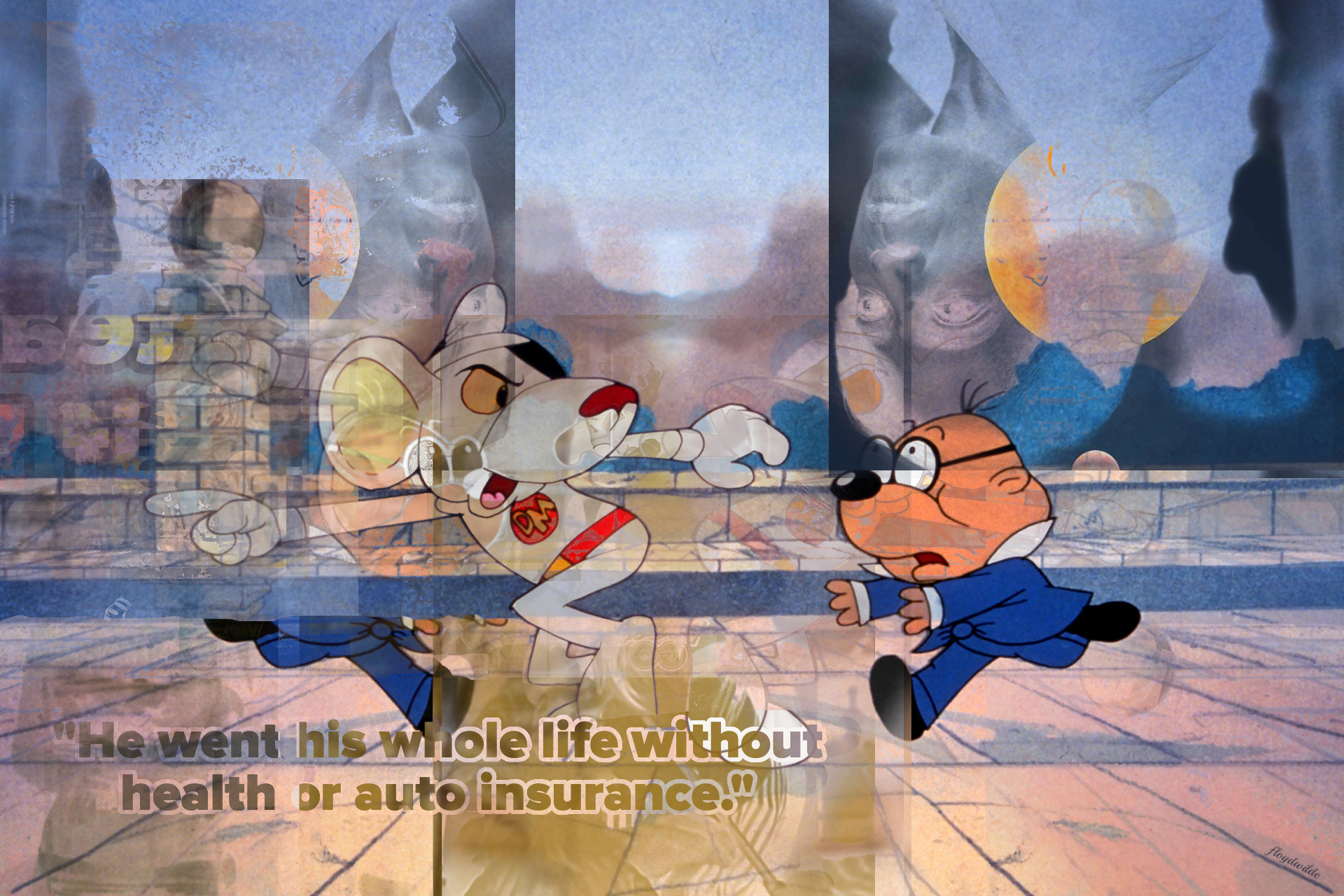Every day, I pull a batch of images from my RSS reader to include in the daily coblage post. From this batch, I composite them in random ways to create 400 derivative images. After compositing, the image goes back into the pool and becomes a candidate for further random compositing and transformation.
When the process works, the image looks like a collage. Sometimes they don’t. Sometimes, little to no compositing happens, and the final image remains almost identical to the original. That works for a daily coblage post, where the image integrates with the text and loses its original context, but it won’t hold up as an interesting, transformed artwork. I don’t always have time to manually sort through them every day and pick the most compelling ones, so I let a random selection process decide which ones get uploaded into the media gallery.

The further down the batch, the more likely an image has layers and turns into something new. Out of the daily 400 images, I skip the first 100, pick 50 from the remaining 300, and import them into the WordPress media gallery.
From those, maybe a few actually feel like a collage—something transformed enough to include in the coblage post. I started randomizing image orientation a while back, but sometimes the rotation doesn’t look right. Before posting, I check each picture and adjust it in the media gallery editor if needed. I can turn it 90 degrees, flip it horizontally or vertically—whatever works in the moment. Speed matters. I try to power through the subset of 50 images as quickly as possible, never spending more than 15 minutes on it.
The coblage post itself comes next after processing the images. Initially, I had to determine the placement of the images manually, dividing the text randomly. Now, AI handles that. It splits the text into paragraphs where breaks might naturally make sense. I experimented with having the AI rewrite the text into something surreal, aiming to enhance the juxtapositions in the cutup, but the results didn’t work. The raw cut-up style remains my preference.
Archiving the WordPress Media Gallery
After 51 months of doing this, my WordPress media gallery has grown large. I don’t know how long I can keep it all stored. To archive it, I started downloading a month’s worth of images at a time and viewing them in Ubuntu’s default image viewer. I liked seeing them play as a slideshow. Instead of saving them as individual JPGs, I began using the screenshot tool to record them as .webp videos. These take up less space and still capture the flow of the images over time.
Now, I also mint these videos on Teia. If I want to look back, I don’t have to scroll through the media gallery—I can just watch the video.
Coblage Retro
I revisit coblage posts in two ways:
- WordPress Media Gallery Retro – The end-of-month slideshow, recorded as a .webp video.
- AI Generative Artwork – Taking an image and text from an old coblage post and
using it as a prompt for AI-generated art. If I use material from today’s
post, I treat it differently than if I go back further.
I categorize this separately from a typical derivative coblage composited image, which I mint on either OpenSea or Teia. The OpenSea series features only composited images with minimal edits in GIMP or processing with ImageMagick. In this current series, I create all images on the same day as the blog post. In a future OpenSea series, I might include pictures from earlier posts. On Teia, I sometimes mint images derived from the daily coblage, using both the image and text prompts from that day’s post. If I revisit a previous coblage post, I tag the piece as retro.
I can’t always process the images further to create standalone digital art beyond the coblage post. Some images come together in a way that resonates with me. Some feel like they mark time, reflecting the world back at me. Doing this work, consuming and remixing information this way, has a curious effect. After first seeing an image during the coblage process, I might later come across it in a news item or article and realize its purpose. Reviewing the images in the WP Media slideshows also helps me remember things.
The question always comes up—can I do what I’m doing? The material exists, and someone will use it. Do you use information from the Internet to make art? If this shouldn’t happen, why does it? This process isn’t just about taking—it involves collection, transformation, context, and assembly.

Leave a Reply